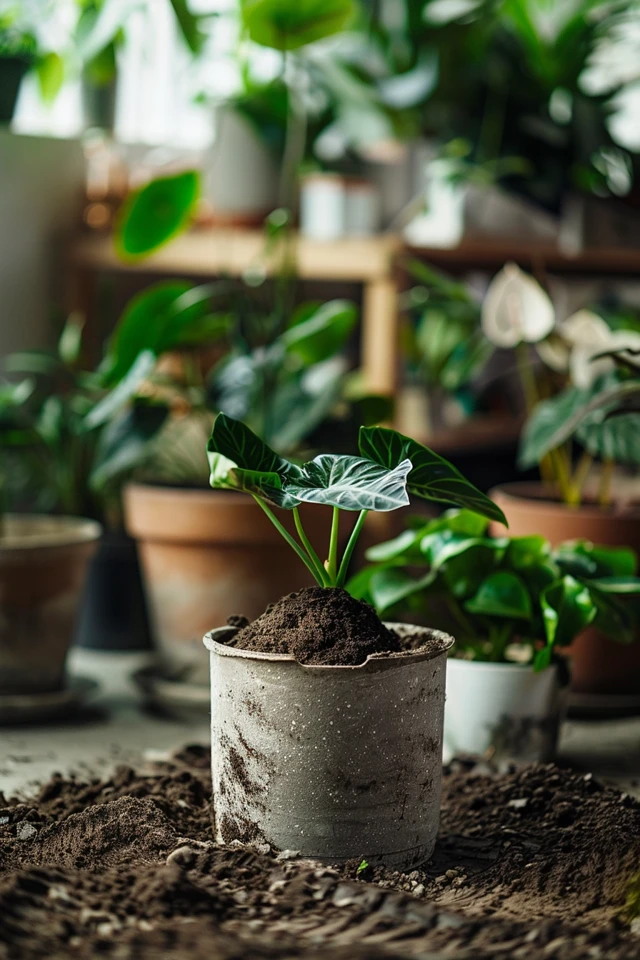Debugging potting soil is a crucial step in ensuring the health and longevity of your plants. By troubleshooting plant problems and maintaining soil health, you can provide effective plant protection. In this article, I will share valuable tips on how to debug potting soil and keep your plants thriving.
Key Takeaways:
- Regularly inspect your plants for signs of pest infestation, such as sticky leaves, chomp marks, or fine webbing.
- Thoroughly examine the undersides of leaves and the soil surface to catch any issues early on.
- Utilize natural pest control methods like insecticidal soap or chrysanthemum-based insecticides.
- Consider wiping down thick-leaved plants with alcohol wipes to remove pests.
- Use vacuuming or garlic cloves pressed into the soil as additional deterrents for bugs.
Signs of Pest Infestation and Thorough Inspection
When it comes to debugging potting soil, it’s crucial to be thorough in your inspection of the plants. Thorough inspection techniques can help you identify the signs of pest infestation early on, allowing you to take necessary preventive measures and safeguard your plants from further damage.
Recognizing Signs of Pest Infestation
During the inspection, keep an eye out for common signs indicating the presence of plant pests. These signs can include:
- Sticky leaves or a honeydew-like substance on the foliage
- Yellow spots or browning on leaves
- Chomp marks on leaves or stems
- Fine webbing on the plants
- Spotting live bugs crawling on the surface of the soil or plants
Inspect the undersides of leaves, as pests often hide there. Look for any pests or eggs that may be attached to the leaves. Additionally, check the soil surface for any bugs or signs of damage to the plant roots.

Importance of Thorough Inspection
“A thorough inspection allows you to catch any pest-related issues early on, preventing a small problem from turning into a major infestation. By identifying the signs of pest infestation, you can take swift action and implement appropriate debugging techniques to protect your plants.”
Regular inspections should be part of your plant care routine to ensure early detection of pests and maintain the health of your plants.

Effective Methods for Debugging Potting Soil
When it comes to keeping your plants healthy and free from pests, there are several effective methods for debugging potting soil. One natural option is to utilize natural pest control solutions like insecticidal soap. You can easily make your own insecticidal soap by mixing mild dish soap or all-natural castile soap with water. This solution is safe for your plants and can help eliminate common pests.
Another effective option for debugging potting soil is to use a chrysanthemum-based insecticide. This type of insecticide contains natural compounds found in chrysanthemum flowers that can paralyze insects upon contact. It provides an effective and environmentally friendly solution to combat pests and protect your plants.
If you have plants with thicker leaves, wiping them down with an alcohol wipe can be an efficient way to remove pests. The alcohol acts as a natural pesticide that can effectively eliminate bugs without causing harm to your plants. Additionally, vacuuming can be used to remove flying pests from the air around your plants, preventing them from causing damage.
Incorporating garlic as a deterrent is another effective method for debugging potting soil. Simply press garlic cloves into the soil near your plants to repel bugs. The strong odor of garlic acts as a natural deterrent, keeping pests away from your plants.
By utilizing these effective methods, such as natural pest control solutions, chrysanthemum-based insecticide, alcohol wipes, vacuuming, and garlic as a deterrent, you can effectively debug your potting soil and maintain a pest-free environment for your plants.


